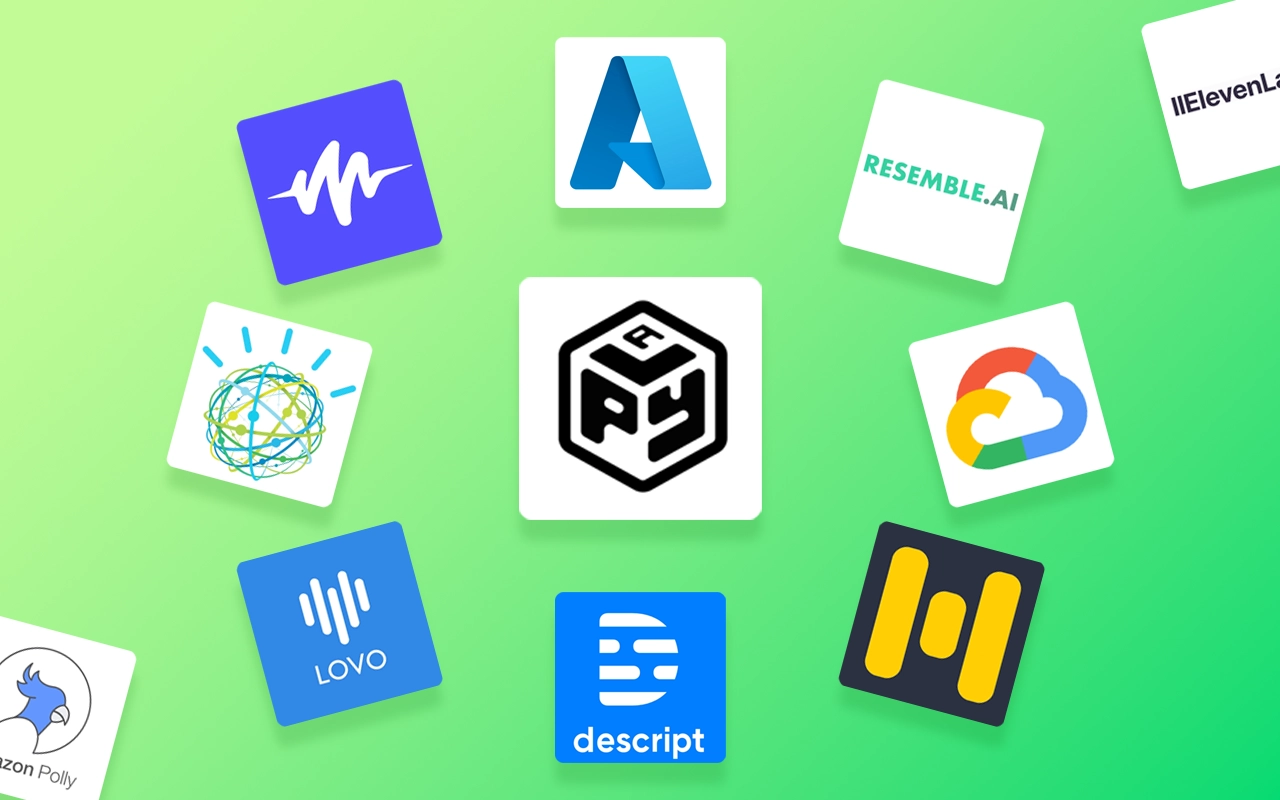Ultimate Guide to Using Text to Speech on Google Docs

Generate AI Voices, Indistinguishable from Humans
Table of Contents
Need help with reviewing and editing your work on Google Docs? Maybe you’re more of a visual learner or find it hard to focus on written text. We understand – reviewing and editing can be tedious and time-consuming.
But what if we told you there’s a better way? Imagine just sitting back, relaxing, and having your documents read aloud to you. It would make catching mistakes and making revisions so much easier. Not to mention, it will save you time and enhance the quality of your work.
With the text-to-speech feature on Google Docs, this dream can become a reality! This powerful tool converts written text into spoken words, making reviewing and editing a breeze. In this guide, we’ll take you through the fantastic world of text-to-speech on Google Docs. You’ll find valuable tips, tricks, and everything you need to make the most of this feature and unlock its full potential. So get ready to dive into the exciting realm of text-to-speech on Google Docs. Let’s do this!
What is Text-to-Speech?
Text-to-speech (TTS) is an incredible technology that effortlessly turns written text into spoken words using intelligent algorithms. This fascinating innovation makes content more accessible and creates an engaging auditory experience. These algorithms work their magic to create artificial voices that sound just like real people – it’s awe-inspiring! Over the years, TTS has come a long way, making huge advancements in producing lifelike results.
The best part about text-to-speech is how it can be used in many different ways. It’s not just for language learners or people with visual impairments – although it’s really helpful for them too! TTS lets us easily listen to books, articles, and other text-based content instead of reading them. Plus, it helps us improve our language skills by teaching us how to say words correctly.
But that’s not all! TTS has become a part of our everyday lives in so many ways. Think about e-book readers that read stories out loud, navigation systems that give us clear directions, language learning apps that help us with tricky pronunciations, and assistive technologies that support people with visual impairments or trouble reading. TTS is truly remarkable, making our lives easier and more enjoyable.
With its ongoing advancements, TTS is revolutionizing how we interact with written content. It’s become an indispensable part of our modern lives, and there’s no doubt it’s here to stay.
How to Use Text-to-Speech on Google Docs
Google Docs is an incredible tool for creating, formatting and editing documents online. But did you know it also offers a cool and useful feature? With Google Docs’ text-to-speech functionality, you can now listen to your documents being read aloud. This feature comes in handy for various reasons.
For instance, you can utilize it to proofread and enhance your writing. Listening to your text being read aloud can help you identify errors and make necessary improvements. Moreover, this feature adds accessibility to your documents, benefiting individuals who may have difficulty reading or visual impairments. It enhances comprehension and makes the content more accessible to a wider audience.
Additionally, text-to-speech on Google Docs can inject a touch of liveliness and excitement into your documents. It transforms plain text into an engaging, spoken experience. You can infuse personality and expression into your work, making it more captivating and enjoyable for readers.
In the following section, we’ll walk you through the process of enabling, using, and customizing the text-to-speech option in Google Docs. By the end of this guide, you’ll master text-to-speech like a pro, harnessing its benefits to enhance your document editing experience. So, let’s dive in and discover how to utilize text-to-speech within Google Docs.
Enabling Text-to-Speech
Before you can start using text-to-speech on Google Docs, you need to make sure it’s enabled. Don’t worry; it’s super easy to do! Just follow these simple steps:
- First, open up a document in Google Docs. It can be any document, new or old.
- Next, look for the “Tools” menu at the top of the page. It’s right between the “Format” and “Table” menus. Click on it to open up a drop-down menu.
- In the drop-down menu, you’ll see a bunch of different options. Look for the one that says “Accessibility settings” and click on it.
- A new window will pop up with some settings you can change. Look for the one that says, “Turn on Screen Reader Support.” There’s a little box next to it that you need to check. Click on the box to put a checkmark in it.
- Finally, click the “OK” button at the bottom of the window to save your changes.
And that’s it! You’ve now enabled text-to-speech on your Google Docs account. From now on, whenever you want to use text-to-speech, it’ll be ready and waiting for you.
Using Text-to-Speech
You’ve just learned how to enable text-to-speech on Google Docs. Now, you’re ready to use it and have your documents read aloud to you. Using text-to-speech software can be incredibly helpful for reviewing and editing your work and for individuals with visual impairments or reading difficulties. In this section, we’ll show you how to use text-to-speech on Google Docs in a few easy steps.
- Highlight the text that you want to hear aloud on your document. You can highlight a word, a sentence, a paragraph, or even the whole document. Just click and drag your mouse over the text you want to select.
- Right-click the highlighted text and select “Speak” from the pop-up menu. This will start the text-to-speech feature, and you’ll hear a voice reading the selected text. Or, if you prefer, you can use a keyboard shortcut instead of right-clicking. Press Ctrl+Alt+X (Windows) or Cmd+Option+X (Mac) on your keyboard, and the text-to-speech feature will start.
- If you need to pause or stop the speech at any time, you can click on the “Pause” or “Stop” buttons in your screen’s bottom right corner. You can also use the keyboard shortcut Ctrl+Alt+Z (Windows) or Cmd+Option+Z (Mac) to pause or stop the speech.
And that’s it! Congratulations on mastering text-to-speech in Google Docs and unlocking a new world of possibilities! Now, you can have your documents read aloud, making reviewing, editing, and accessibility easier than ever before.
Customizing Text-to-Speech
Now, if you’re all about customizing things to your liking, Google Docs has got you covered with text-to-speech. Check out these options:
- Changing the voice: You can pick from different voices, ranging from male to female, with various accents. Want to switch up the voice? Go to the “Tools” menu, click on “Accessibility settings,” and select a voice from the “Text-to-speech voice” drop-down menu.
- Changing the speed: Feeling the need for speed or fancy a more leisurely pace? You can adjust the speech speed to make it faster or slower. To do this, go to the “Tools” menu, hit up “Accessibility settings,” and use the slider next to “Text-to-speech speed” to find your perfect tempo.
- Changing the language: Want to switch things up and have the speech in a different language? Go to the “File” menu, choose “Language,” and select your desired language from the drop-down menu.
You can customize and personalize your text-to-speech experience by adjusting the options available. It’s all about tailoring it to your individual needs and preferences!
Tips and Tricks for Using Text-to-Speech on Google Docs
Text-to-speech is a valuable tool to help you review and edit your work on Google Docs. It converts written text into spoken words, making catching mistakes and improving your writing easier. Here are some tips to help you use text-to-speech effectively on Google Docs:
- Pop on some headphones: For the best experience, use headphones. This helps you focus on the speech and block out any background noise.
- Speed it up or slow it down: Customize the speech speed to your liking. Speed it up if you’re struggling to keep up, or slow it down if you want to review your work quickly.
- Take breaks: Remember to take breaks when using text-to-speech for extended periods. This helps prevent fatigue and keeps your mind fresh.
- Proofread like a pro: Text-to-speech is fantastic for proofreading your work. Listen to your document being read aloud to catch mistakes you might have missed when reading silently.
- Play with voices: Google Docs offers different voices for text-to-speech, including different accents and gender options. Experiment to find the voice that suits you best.
By following these tips, you can make the most of text-to-speech on Google Docs and boost your productivity. Give it a shot and see how it can help you!
Troubleshooting Common Issues with Text-to-Speech on Google Docs
Text-to-speech is a handy feature that helps you review and edit your work. But sometimes, it can run into a few hiccups. Here are some problems you might face and how to solve them:
- Text-to-speech not working: If text-to-speech isn’t cooperating, make sure you’ve enabled it in Accessibility settings. Go to the “Tools” menu, select “Accessibility settings,” and check the box next to “Turn on Screen Reader Support.” If it’s still not working, try clearing your browser cache or give a different browser a whirl.
- Voice unclear or unnatural: If the voice isn’t up to par, you can change it or adjust the speed. Head over to the “Tools” menu, select “Accessibility settings,” and use the drop-down menus to find your preferred voice or tweak the speed.
- Text-to-speech not available in other languages: Don’t worry if it’s unavailable in your desired language. Just make sure you’ve selected the correct language for your document. Go to the “File” menu, select “Language,” and choose a different language from the drop-down menu.
With these handy solutions, you can troubleshoot text-to-speech issues on Google Docs and use this powerful tool effectively.
Conclusion
To sum it up, text-to-speech is an excellent feature on Google Docs that can help you review and edit your work effortlessly. Converting written text into spoken words makes catching mistakes and improving your writing easier. In this guide, we’ve got you covered with all you need to know about enabling, using, and customizing text-to-speech on Google Docs. We’ve added some valuable tips, tricks, and solutions for common issues that might come up. By following this guide, you’ll unlock the full potential of text-to-speech and boost your productivity on Google Docs!
FAQs
Can I Use Text-to-Speech in Languages Other Than English?
Yes, text-to-speech is available in many different languages on Google Docs. To change the language, go to the “File” menu, select “Language,” and choose a different language from the drop-down menu. Once you’ve selected a new language, the text-to-speech feature will use that language to read your document aloud.
Is There A Limit To How Much Text I Can Convert Using Text-To-Speech?
No, there is no limit to the amount of text you can convert using the impressive text-to-speech feature on Google Docs. This versatile tool lets you have a whole document read aloud to you so you can fully engage with the content and understand every detail. Plus, you can count on this powerful feature to read specific text sections, giving you unmatched convenience and flexibility. Neat, right?
Can I Use Text-to-Speech Offline?
Actually, you need an internet connection to use the text-to-speech feature on Google Docs. It’s because the feature heavily relies on cloud-based technology that’s specifically built to generate speech.
Is There A Cost Associated With Using Text-To-Speech On Google Docs?
Nope, text-to-speech is free for all Google Docs users! You can easily use this handy feature no matter what you’re writing. Go ahead and take full advantage of it to suit your language preferences and amp up your overall experience.
Similar articles

Best AI Agents You Should Know

The Best Text to Speech APIs

What is an AI Agent? Explained in Simple Terms.

Best AI for Real Estate Agents

The Best Autonomous AI Agents

Best AI Chatbots Reviewed: ChatGPT, Claude, Gemini, & More.

The Best AI Writers: Reviewed by Humans

Best AI Photo Editors for Stunning Visuals

Best AI Essay Writers Making Writing Easier

The Best AI Detectors

Why is ElevenLabs so Popular?

The Best AI Video Editors

Chatbots VS Conversational AI

What Is On-Premise Text To Speech API?

Generative AI for Enterprises: The Ultimate Guide






 Conversational
Conversational
 Clone your voice
Clone your voice










































